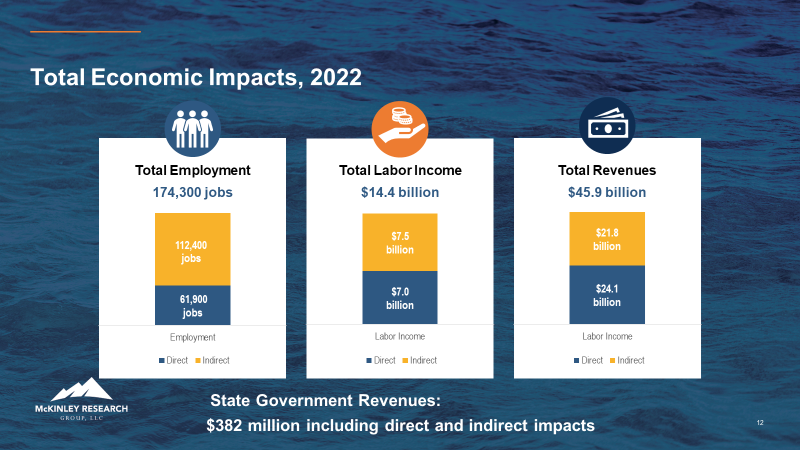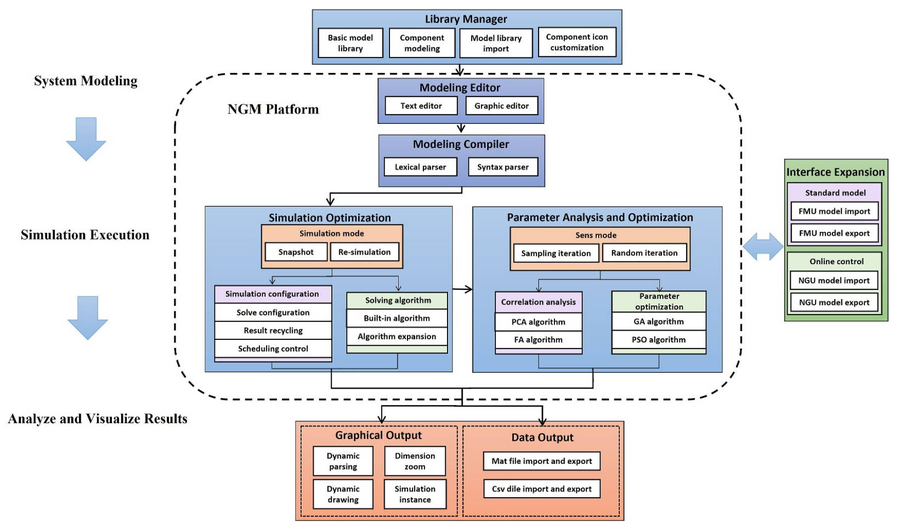Washington’s average annual compensation in maritime-related jobs is $112,000 including benefits and Washington’s maritime sector contributes more than $149 million annually in state taxes
SEATTLE, WA, November 13, 2023 /24-7PressRelease/ — The Washington Maritime Federation (WMF) released a study today documenting the tremendous impact of maritime businesses and activities on Washington State’s economy. The average annual compensation in maritime-related jobs is $112,000 including benefits. The study details an industry that is a foundation of our state’s economy and a leader in innovation and sustainability.
“The Economic Impacts of Washington’s Maritime Industry” was conducted for the WMF by McKinley Research Group in association with High Peak Strategy. The full report is available at www.maritimefederation.com.
“The maritime economy of Washington state has long provided economic prosperity to our region. Our culture of commerce and trade was built on the ports of Puget Sound,” said Port of Seattle Commissioner Hamdi Mohamed. “Today this tradition continues to benefit the entire state, and indeed the country.”
Overall, Washington’s maritime sector contributes more than $382 million including direct and indirect/induced impacts to Washington State revenues. Maritime Logistics and Shipping have the largest impact, with Shipbuilding Repair and Maintenance second, and Commercial Fishing and Seafood Processing third.
While the majority of activities are along Puget Sound, maritime operations are prevalent statewide, from commercial fishing and seafood production on the Washington coast to river port facilities, rail, recreational boating and logistics operations across Central and Eastern Washington.
“This study speaks to the tremendous importance of the maritime industry to Washington state,” said Chad See, WMF Board President, and Executive Director of the Freezer Longline Coalition. “Maritime drives our economy, lifts up our communities and delivers our goods to consumers around the world. Through innovation, investment in our workforce, and hard work, maritime continues to deliver for our state.”
The maritime industry represents a diverse workforce, from executive-office positions to factory-floor workers and fishermen. Maritime workers represent a wide range of skills and educational backgrounds. The most common maritime occupation in 2022 was “welders, cutters, solderers, and brazers,” followed by “cargo and freight agents,” “heavy and tractor-trailer truck drivers,” laborers and freight, stock, and material movers,” and “captains, mates, and pilots of water vessels.” Many of these positions provide a living wage for workers without requiring a four-year college degree.
Washington is also rapidly becoming a hub of maritime innovation, with dozens of local startups creating products ranging from kelp-based snacks to shipping logistics apps to new ballast water treatment systems.
And, as awareness of the industry’s footprint on oceans and waterways has increased, so too have efforts to minimize environmental impacts, such as more efficient vessel design; reduced underwater noise impacts on wildlife; cleaner fuels; and improved vessel routing.
See said the industry is positioning itself to meet future challenges: with workforce development initiatives, technological innovation, and environmental stewardship. “A multitude of educational and training programs have been developed in recent years to address current and expected workforce shortages in the maritime sector, including apprenticeship programs, skill centers, and the first-ever Maritime High School in the state,” he said.
“The maritime industry needs people from every single community at every level — and opportunities exist for everyone,” says Ann Avary, director at NW Center of Excellence for Marine Manufacturing & Technology in Anacortes.
Washington state has created a statewide plan addressing the workforce maritime needs called the Washington State Workforce Development Pathway, says Avary. The state wants to raise awareness of the industry’s needs including those involving boats, shipbuilding, ship repair, fishing and seafood, transportation tugs, ferries, and more.
“Training for a maritime career doesn’t require a degree from a four-year college or university, so students don’t have to take on a big debt load to get started. A nine-month program at the Seattle Maritime Academy can cost as little as $11,000 and put a student on a clear path to starting wages upwards of $60,000 a year, depending on the position,” said Dale Bateman, Associate Dean of the Seattle Maritime Academy. “Even better, programs like the Seattle Promise can make tuition free.
To learn more about maritime training programs and careers, visit
https://www.washingtonmaritimecareers.org/programs.
Contact:
Jordan Royer
Board Member, WMF
jroyer@pmsaship.com
206.604.1850
Study Sponsors
American Waterways Operators, At-Sea Processors Association, Freezer Longline Coalition, Groundfish Forum, Marine Exchange of Puget Sound, Northwest Center of Excellence for Marine Manufacturing & Technology, Northwest Marine Trade Association, Pacific Merchant Shipping Association, Port of Seattle, Puget Sound Pilots, Seattle Propeller Club, Seattle Marine Business Coalition, Transportation Institute, Washington State Department of Commerce, and West Coast Seafood Processors Association.
About the Washington Maritime Federation
The Washington Maritime Federation is an industry-led statewide association comprised of participants from all sectors of the maritime industry in Washington state. Our diverse maritime sectors are inextricably linked and vital to our state’s economy. By tapping into these interconnections and common goals and utilizing the networks of existing maritime and related organizations, the Washington Maritime Federation serves as a catalyst to support and grow our maritime industry.
For more information, please visit https://www.maritimefederation.com/.
—
For the original version of this press release, please visit 24-7PressRelease.com here





